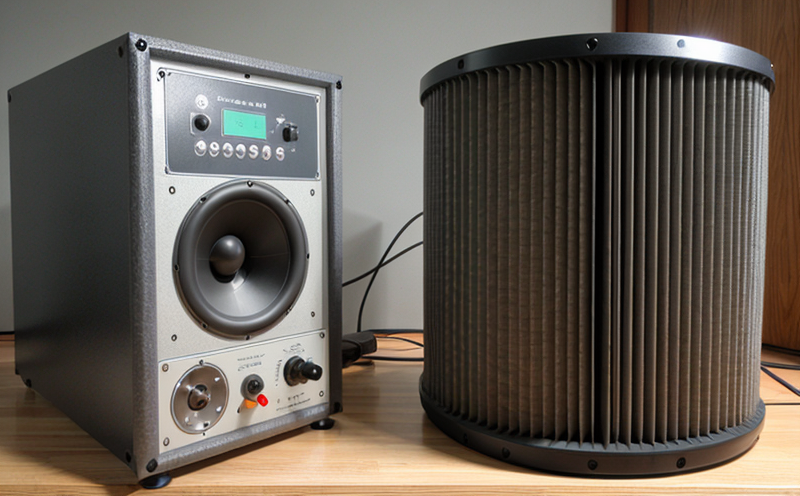IMO Resolution MSC.299(87) Passenger Ship Noise Testing
The International Maritime Organization (IMO), through its Resolution MSC.299(87), has set stringent regulations for the noise levels in passenger ships to ensure a comfortable and healthy environment for passengers and crew alike. This regulation is part of the broader effort by maritime authorities to enhance the quality of life on board vessels, especially focusing on reducing noise pollution which can significantly impact the well-being of those onboard.
The testing process under MSC.299(87) involves a series of rigorous procedures designed to measure and analyze the ambient sound levels within various zones of passenger ships. The primary objective is to ensure that the noise levels remain below specified thresholds, thereby maintaining an acceptable acoustic environment for all users. This includes not only passengers but also crew members who spend prolonged periods in close proximity to noisy areas.
Our laboratory adheres strictly to these guidelines and employs advanced technologies and methodologies to conduct these tests accurately and efficiently. The testing process typically begins with a comprehensive assessment of the vessel's design, layout, and operational characteristics that influence sound propagation within its structure. This involves detailed mapping of potential noise sources such as machinery rooms, engine spaces, and other high-noise generating areas.
Once identified, these sources are isolated for individual noise measurement using precision instruments capable of capturing even minute fluctuations in decibel levels. Our experts then correlate the measured values with international standards like ISO 140-8:2005 which provide benchmarks for acceptable noise levels in various types of enclosed spaces.
After obtaining raw data, our team applies statistical analysis techniques to determine compliance with IMO requirements. If any area fails to meet the specified limits, remedial actions are proposed based on identified issues. These might range from minor adjustments in layout design to more extensive modifications involving sound-absorbing materials or insulation methods.
It is important to note that maintaining a quiet environment aboard passenger ships goes beyond mere comfort; it has significant implications for health and safety. Prolonged exposure to high noise levels can lead to stress, sleep disturbances, hearing damage among other adverse effects. By adhering strictly to MSC.299(87), our laboratory helps operators comply with these essential regulations, contributing to a safer and healthier onboard experience.
Our approach ensures that every aspect of the testing process is conducted meticulously, ensuring accurate results aligned with international standards. This commitment not only supports regulatory compliance but also enhances the overall quality of life on board passenger ships.
Applied Standards
| Standard | Description |
|---|---|
| ISO 140-8:2005 | Sounds in buildings – Part 8: Noise from various sources and assessment criteria for residential, hospital and similar environments. |
| IMO Resolution MSC.299(87) | Regulations setting noise level limits on passenger ships to ensure a comfortable environment. |
The International Organization for Standardization (ISO) standard ISO 140-8:2005 provides guidelines for assessing sound levels in various types of enclosed spaces, including those found on passenger ships. This standard is particularly useful when evaluating the effectiveness of noise reduction measures implemented during or after construction.
IMO Resolution MSC.299(87), as mentioned earlier, specifies strict limits on allowable noise levels within different compartments of passenger ships. Compliance with these regulations ensures that passengers and crew experience a quieter environment free from excessive sound pollution.
Industry Applications
| Application Area | Description |
|---|---|
| Cruise Ships | Ensuring compliance with noise regulations for passenger comfort and crew health. |
| Liners & Ferries | Maintaining acceptable sound environments throughout the vessel's lifecycle. |
The application of IMO Resolution MSC.299(87) Passenger Ship Noise Testing is particularly relevant in several key sectors within the maritime industry:
- Cruise Ships: Cruise lines are highly sensitive to passenger satisfaction, and any disruption caused by excessive noise can significantly affect their reputation. By adhering to these regulations, cruise operators ensure that their vessels meet high standards of comfort and safety.
- Liners & Ferries: For regular service routes where passengers frequently change, maintaining a quiet environment is crucial for passenger satisfaction and staff wellbeing. This testing helps in identifying potential noise sources early on, allowing operators to take proactive measures before they become problematic.
In both cases, the results of our tests not only ensure compliance with regulatory requirements but also contribute towards enhancing the quality of life on board. Our comprehensive approach ensures that all aspects related to noise control are addressed effectively, leading to more pleasant and safer travel experiences.
Environmental and Sustainability Contributions
The pursuit of environmental sustainability in the maritime sector extends beyond just reducing carbon footprints; it also encompasses efforts aimed at minimizing other forms of pollution such as noise. By conducting thorough noise testing according to IMO Resolution MSC.299(87), our laboratory plays a vital role in promoting quieter, healthier environments aboard passenger ships.
Lowering noise levels within the ship's interior has multiple benefits for both human health and marine ecosystems. Reduced ambient noise leads to improved sleep quality among passengers and crew members, reduced stress levels, and enhanced overall well-being. Additionally, quieter vessels contribute positively to reducing disturbance to nearby wildlife habitats, promoting ecological balance.
Furthermore, by ensuring compliance with these stringent regulations, we help operators make informed decisions regarding vessel design and operation that prioritize passenger comfort without compromising on safety standards. This balanced approach ensures sustainable practices are integrated seamlessly into daily operations while maintaining the highest levels of environmental responsibility.





